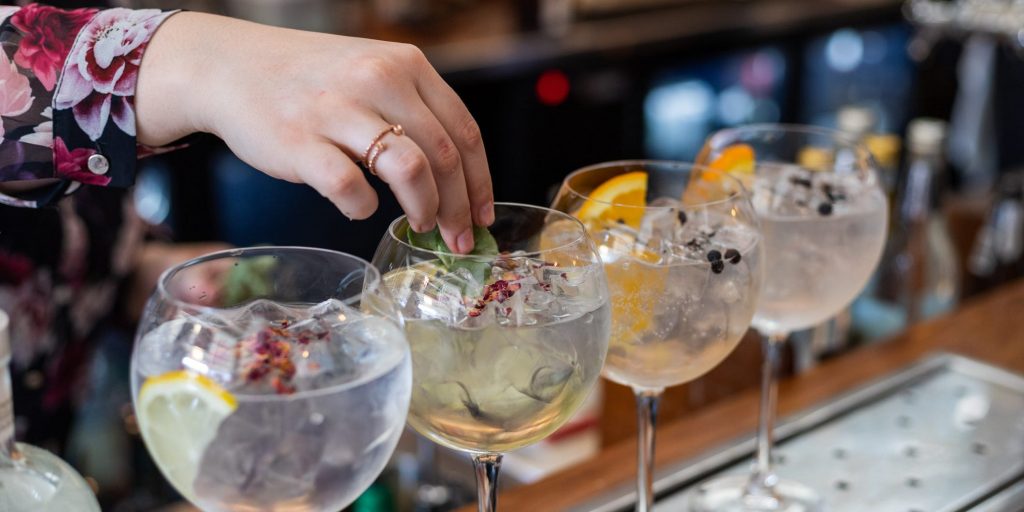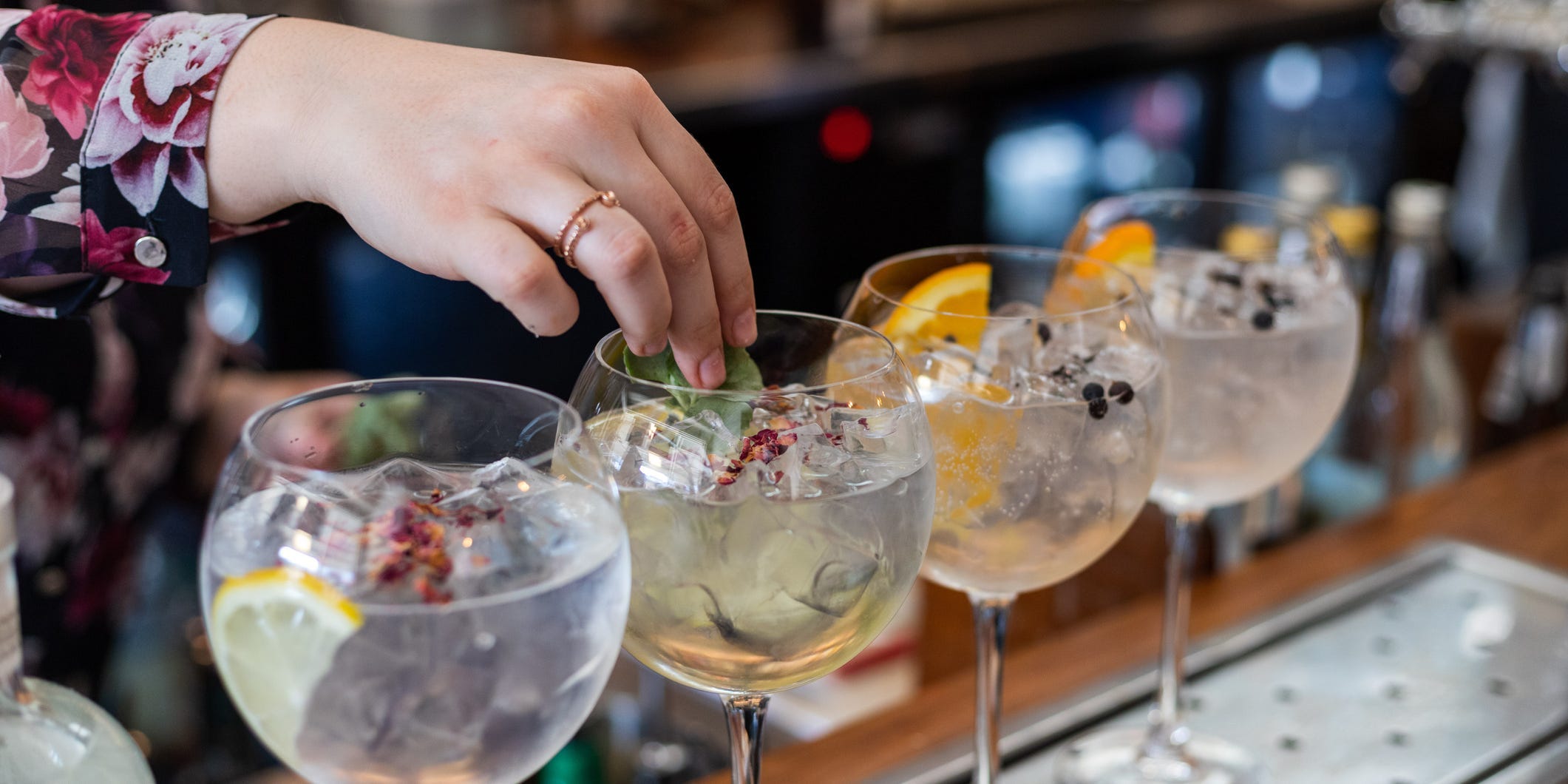
- Gin is made by infusing a neutral grain spirit with juniper and other botanicals.
- Each brand of gin has a distinct taste.
- Gin is the base spirit of many iconic cocktails, including the martini.
- Visit Insider's Home & Kitchen Reference library for more stories.
When we think of classic drinks from the golden age of cocktails, it's impossible to ignore the distinct, herbaceous flavor of gin.
Gin is a neutral spirit enhanced with the flavors of botanicals infused during the distilling process. According to cocktail expert Prairie Rose, author of "Mixology for Beginners: Innovative Craft Cocktails for the Home Bartender", juniper must be included for the spirit to be considered gin, but there are many other common additions. "The botanicals are usually a mixture of orange peels, citrus, rosemary, licorice, and other plants and spices," says Rose.
The origins of gin can be traced back to 11th-century Europe when juniper-infused alcohol was used as a medicinal drink called genever. Over the following centuries, gin steadily increased in popularity across northern Europe. "When we think of real pre-prohibition, classic cocktails, we often think of gin," says Rose. "It was super popular at the time that cocktails came into being."
Meanwhile, innovative bartenders have been building on the classic pantheon and creating new and exciting gin cocktails with high-quality ingredients and modern techniques. Most cocktail enthusiasts are familiar with long-time favorites, but there are many other cocktails that showcase the unmistakable juniper and botanical flavor notes of gin. To help guide you through the history of gin, here are 13 must-try classic gin cocktails.
1. Martini
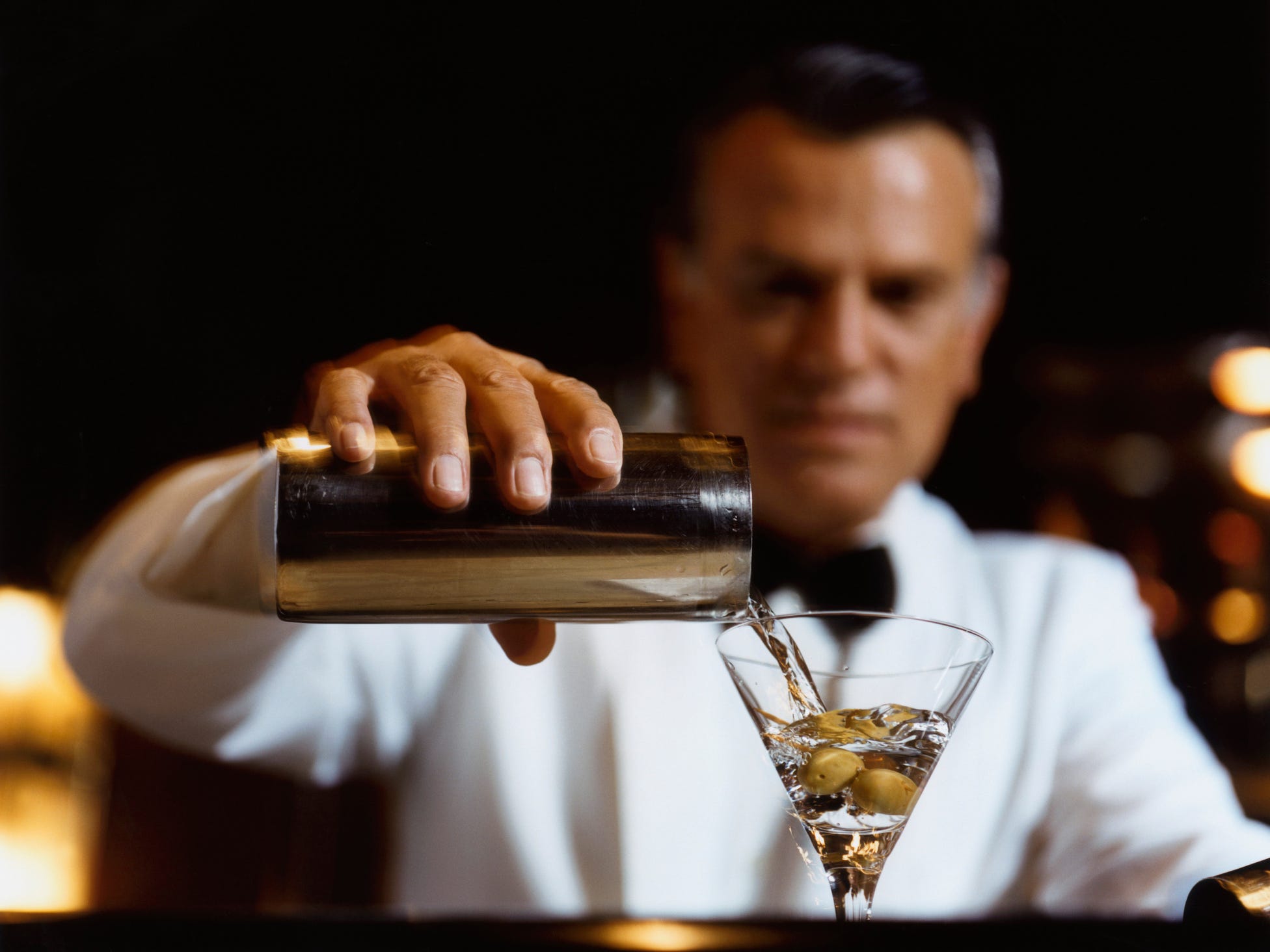
Although the martini is one of the most well-known cocktails, there's no clear-cut origin story. The name of the drink is believed to come from the Martini brand of dry vermouth. It's closely related to both the Manhattan and the Martinez — all call for a simple, yet balanced mix of a spirit and a vermouth.
A martini consists of two main ingredients: gin and dry vermouth, which is a type of fortified wine. There are many riffs on this cocktail, and every martini aficionado has a preferred way of ordering one. "It's all preference," says Rose. "I really love vermouth. I like to make my martini with two parts gin to one part vermouth." Beyond experimenting with proportions and different types of gin and vermouth, martinis can also contain orange bitters, a splash of olive brine, or even be made with vodka.
To make Prairie's recommended version of a martini, combine all of the ingredients in a mixing glass and stir with ice until chilled. Strain into a chilled glass, and garnish with your choice of a lemon twist or olive.
2. Cosmonaut
The cosmonaut was created by Sasha Petraske at his legendary bar Milk & Honey in the early 2000s. This was his take on the extremely popular, vodka-based cosmopolitan.
"Sasha from Milk and Honey was responsible for introducing so many people in New York to gin cocktails. He famously didn't carry vodka at his bar because he wanted to introduce more people to gin at the time," says Rose.
To make a cosmonaut, put all of the ingredients into a shaker with ice and shake until chilled. Then strain into a chilled glass. It should have the trademark pinkish hue of a cosmopolitan, but with a much different flavor profile.
3. Gimlet
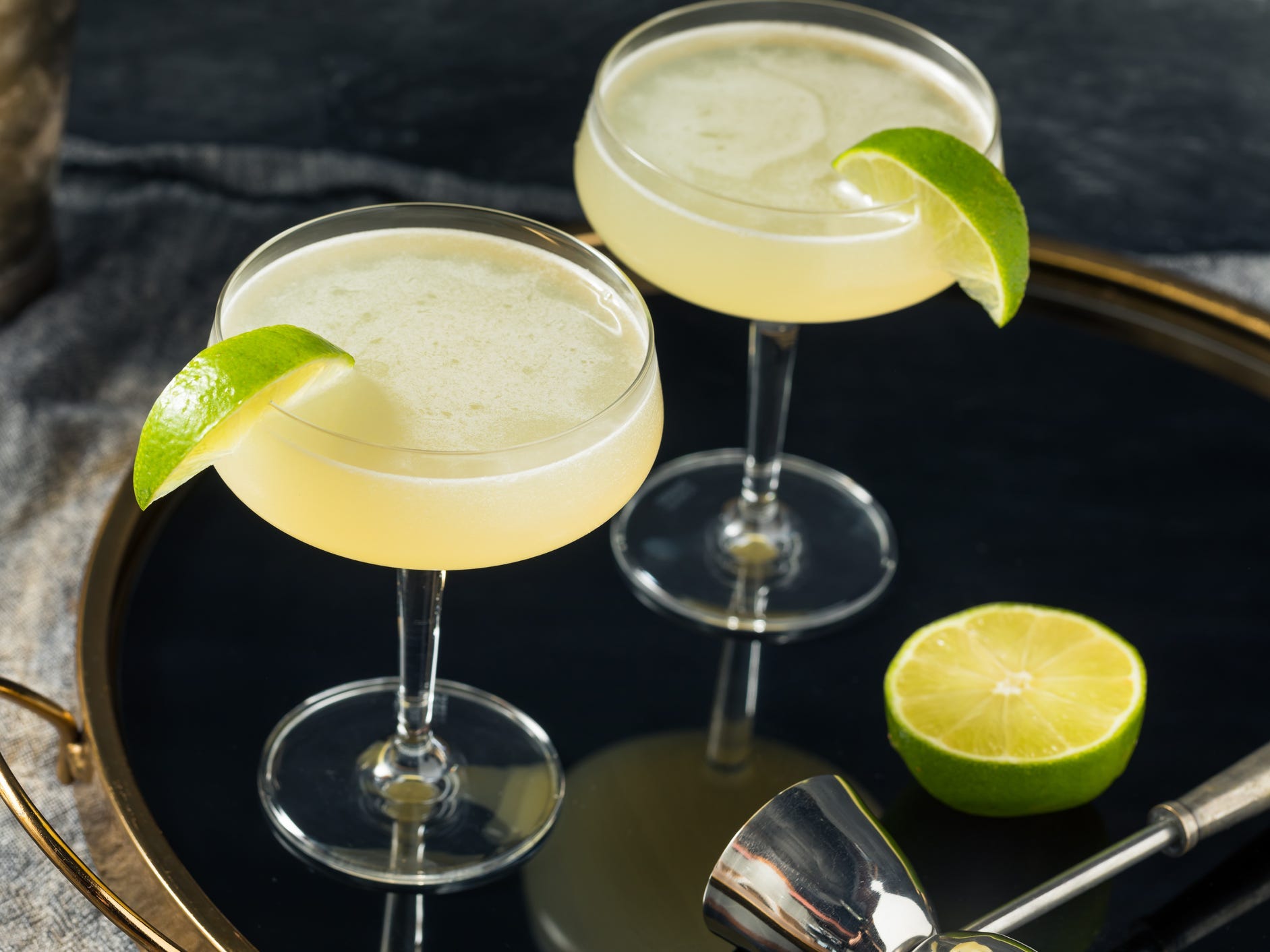
The gilmit is believed to have its origins in the 1880s in the British Royal Navy. Sailors were allegedly encouraged to mix their gin with citrus in order to help stave off the effects of scurvy. Like many classic cocktails, its recipe was later enshrined in 1930 in "The Savoy Cocktail Book" written by Harry Craddock.
In many older recipes, Rose's lime juice cordial is recommended when preparing a gimlet, but over time the ingredients used to make the cordial changed. Now many bartenders opt for fresh lime juice and simple syrup to make a fresher and more balanced version.
To make a gimlet, mix the gin, lime juice, and simple syrup in a cocktail shaker with ice and shake to mix. Strain into a chilled glass and garnish with a lime wheel.
4. Ramos Gin Fizz
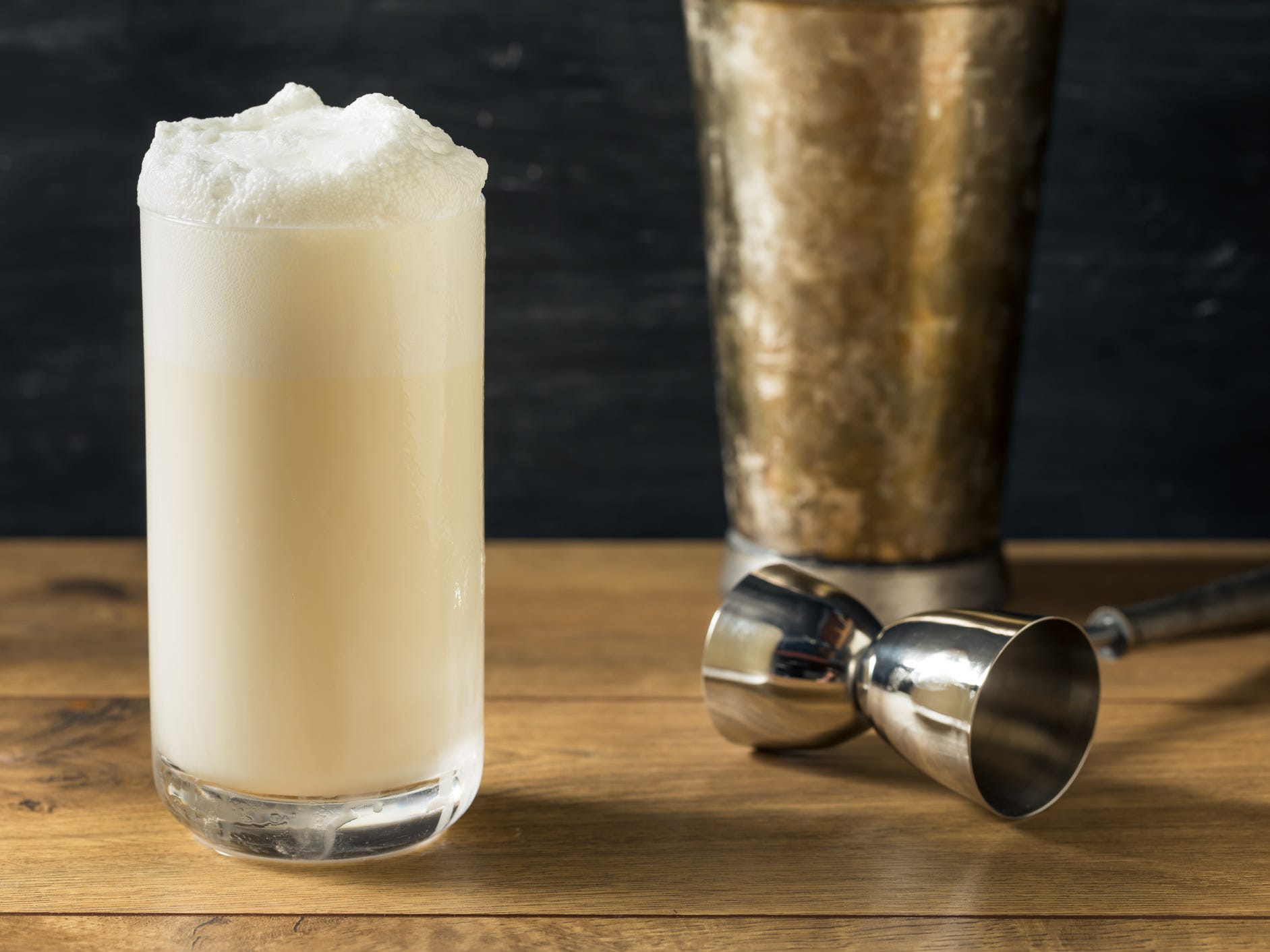
The Ramos Gin Fizz was created in 1888 by Henry Charles Ramos while working at the Imperial Cabinet Saloon in New Orleans. Legend states that the drink was so popular that Ramos hired dozens of barbacks just to help with shaking this labor-intensive cocktail. The original recipe suggested shaking for ten to fifteen minutes.
Today, the technique to make this famous beverage is somewhat debated among bartenders. Some prefer to dry shake first, some shake with ice from the start. Some also suggest topping the drink off with the club soda, adding half of the soda into the glass before adding the mixed cocktail, and then topping with the rest.
Generally, to make a Ramos Gin Fizz, combine all ingredients except for the soda into a cocktail shaker without ice and shake for fifteen to twenty seconds until the ingredients are thoroughly combined. Then add ice and shake for another fifteen to twenty seconds until fully diluted and chilled. Pour into a glass and slowly top with the soda water, creating a thick foam at the top of the glass. Optionally, add two drops of orange flower water to the top of the foam.
5. Last Word
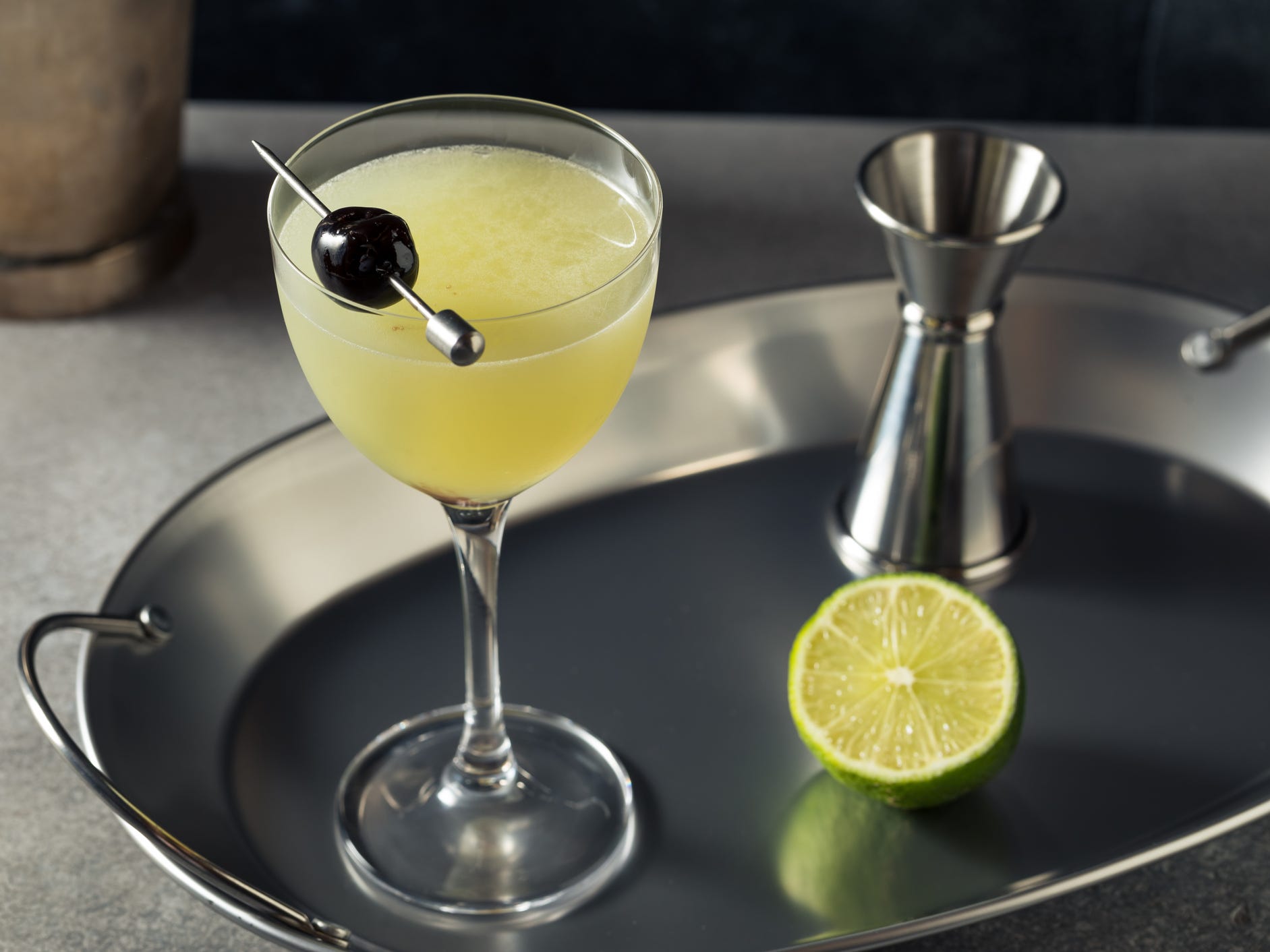
The Last Word cocktail originated at the Detroit Athletic Club in 1915, came to modern prominence in 2002 at the Zig Zag Cafe in Seattle thanks to Murray Stenson.
To make this drink, shake equal parts gin, green Chartreuse, maraschino liqueur, and lime juice in a shaker with ice and fine strain into a chilled glass. The last word has also become a blueprint for other, similar equal-part cocktails like the bourbon-based paper plane.
6. Martinez
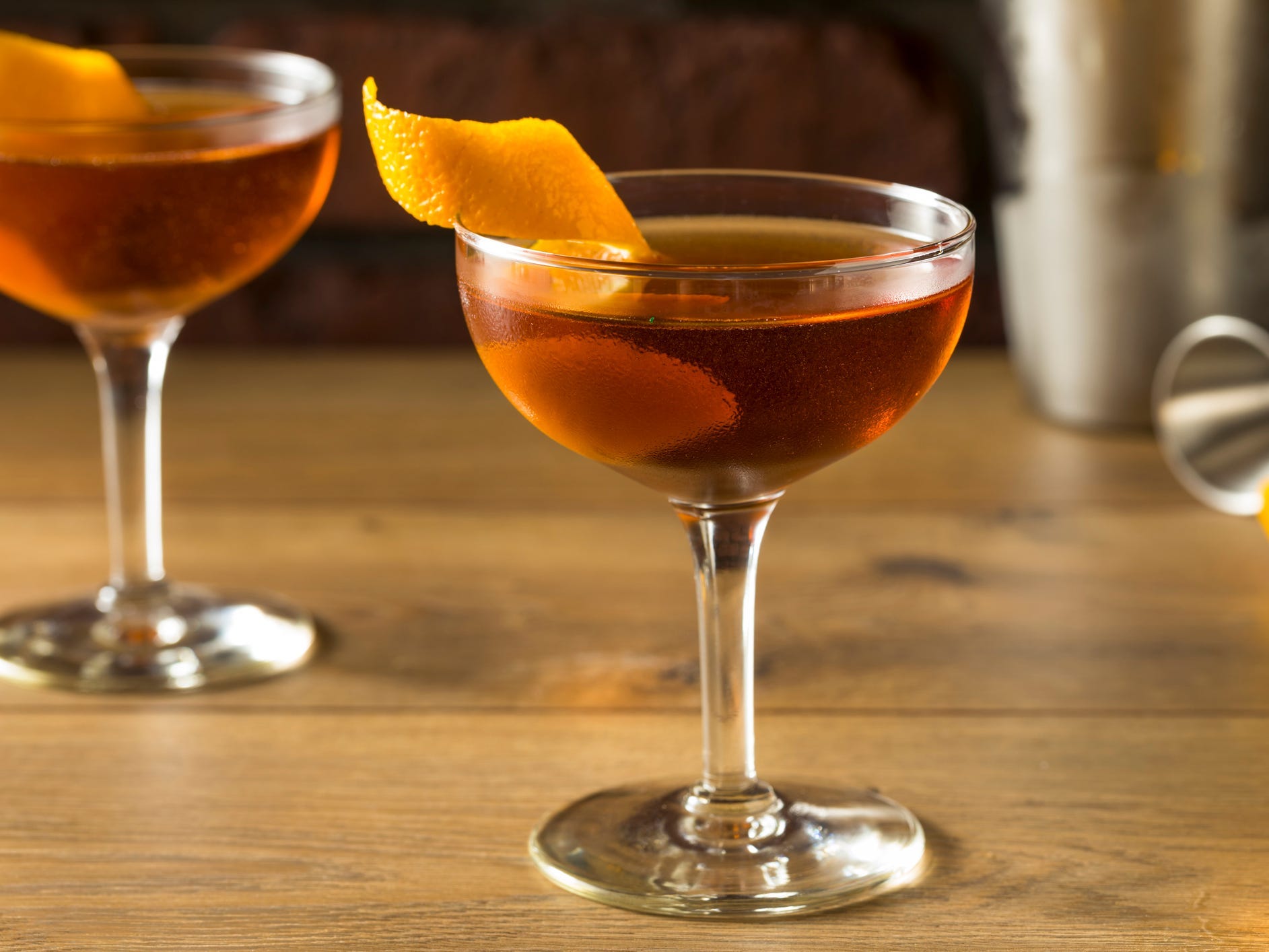
The first recipe for the Martinez was printed in 1884 in O.H. Byron's book, "The Modern Bartender's Guide." The recipe is similar to the Manhattan and many cocktail historians consider it to be an early iteration of the classic dry martini.
To make a Martinez, combine all of the ingredients and stir with ice until chilled. Strain into a chilled glass and garnish with a twist of orange peel.
7. French 75
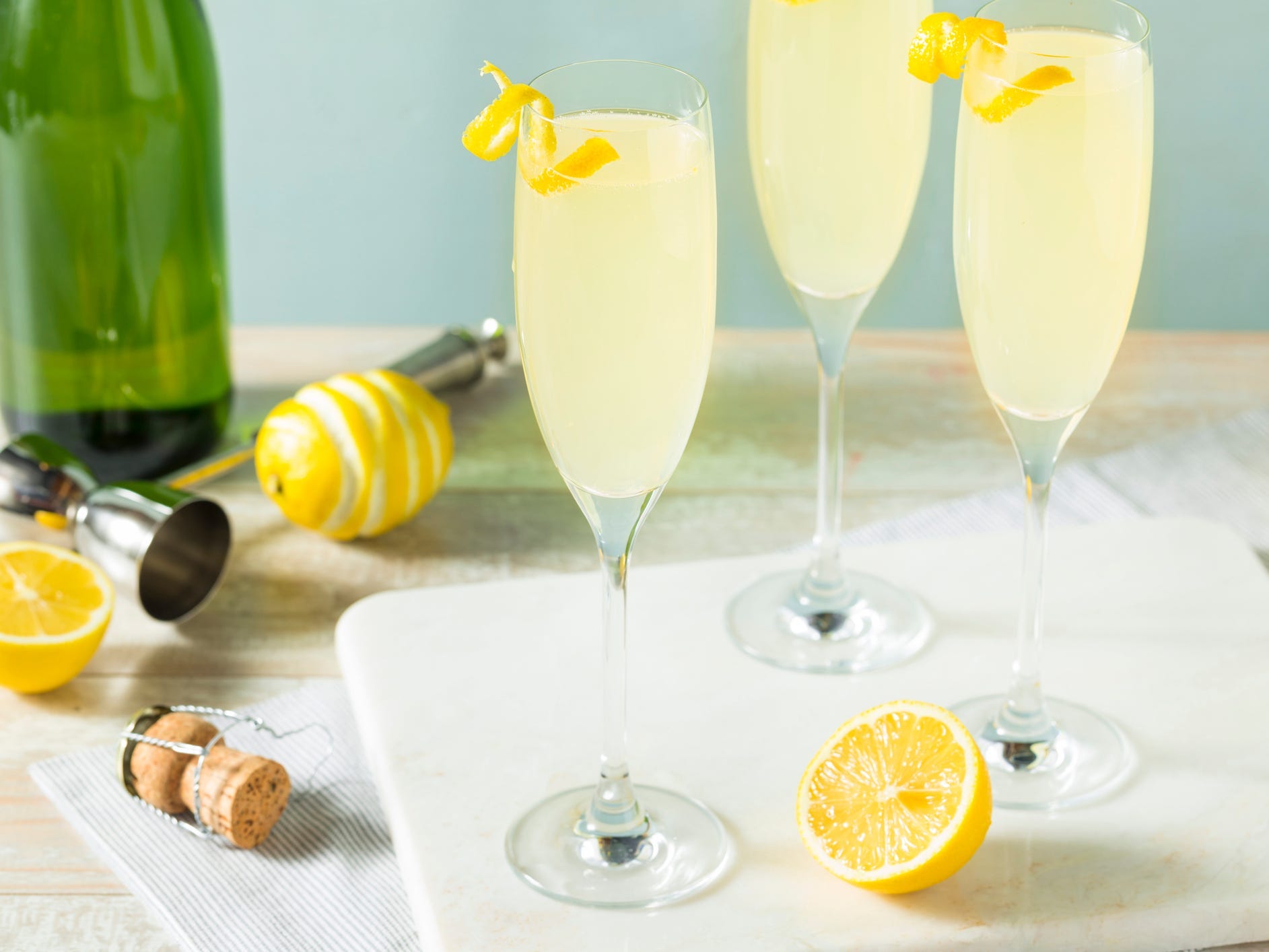
The history of the French 75 is nebulous, but we know it made its first appearance in recipe books during prohibition in 1927. Like many other popular drinks of its time, it was quickly immortalized in "The Savoy Cocktail Book" in 1930 and remains a staple in the classic cocktail world to this day.
To make a French 75, combine the lemon juice, simple syrup, and gin in a shaker and shake with ice. Strain into a chilled glass and top with champagne and a lemon twist.
8. Negroni
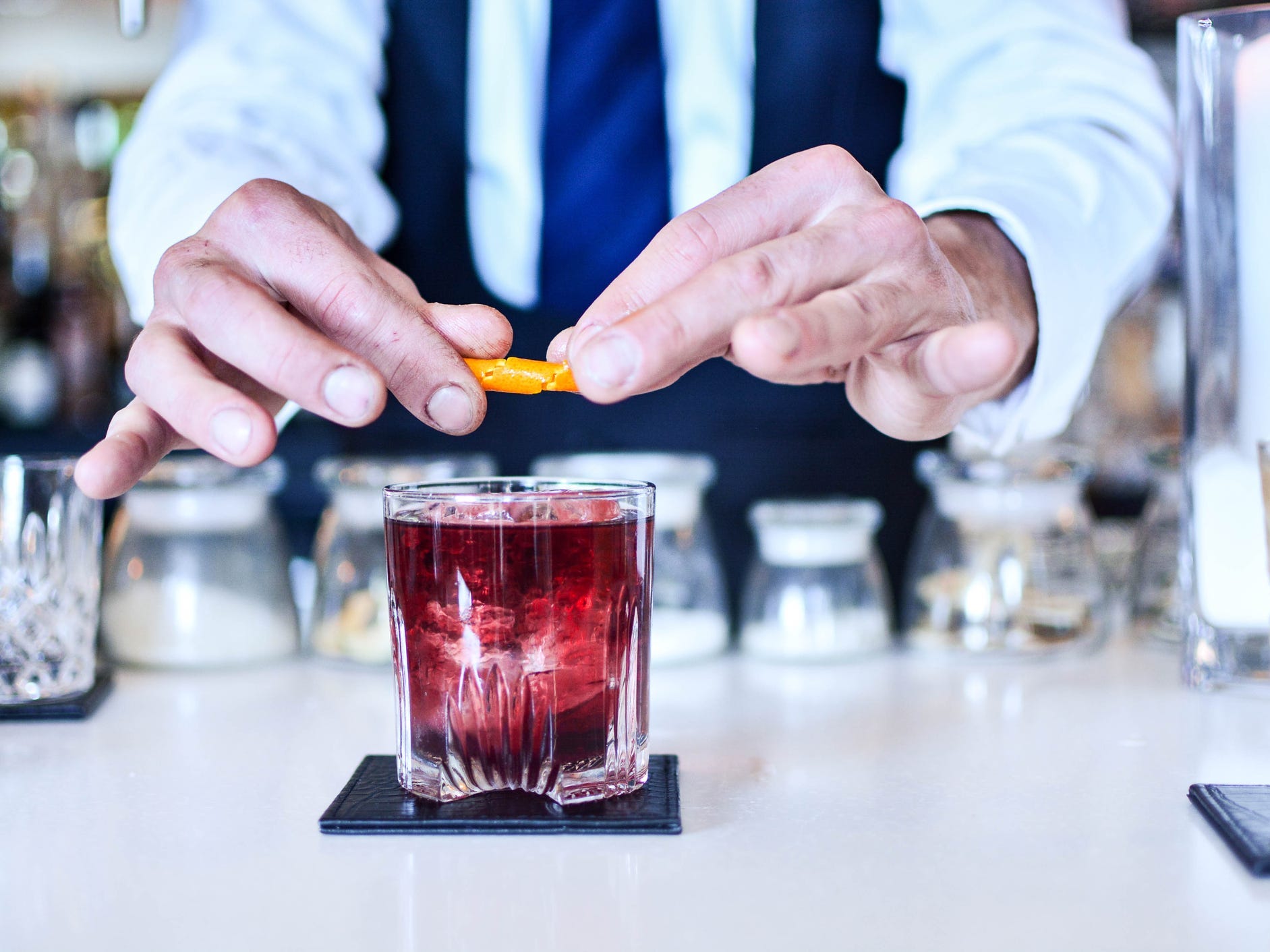
The Negroni was allegedly invented by Count Camillo Negroni in Italy when he requested an americano with gin instead of soda. The Campari adds a touch of bitterness to balance the sweet vermouth with the juniper notes in the gin. "The sweet vermouth, the bitter Campari, and the complexities of the botanicals in the gin. There's something really beautifully balanced about those three ingredients combined in equal parts," says Rose.
This drink remains a mainstay in the cocktail scene and because of its continued popularity, there are many variations of the Negroni — most notably the bourbon-based Boulevardier.
To make a classic Negroni, mix equal parts gin, Campari, and sweet vermouth with ice. Strain over ice into a rocks glass and garnish with an orange twist.
9. Corpse Reviver #2
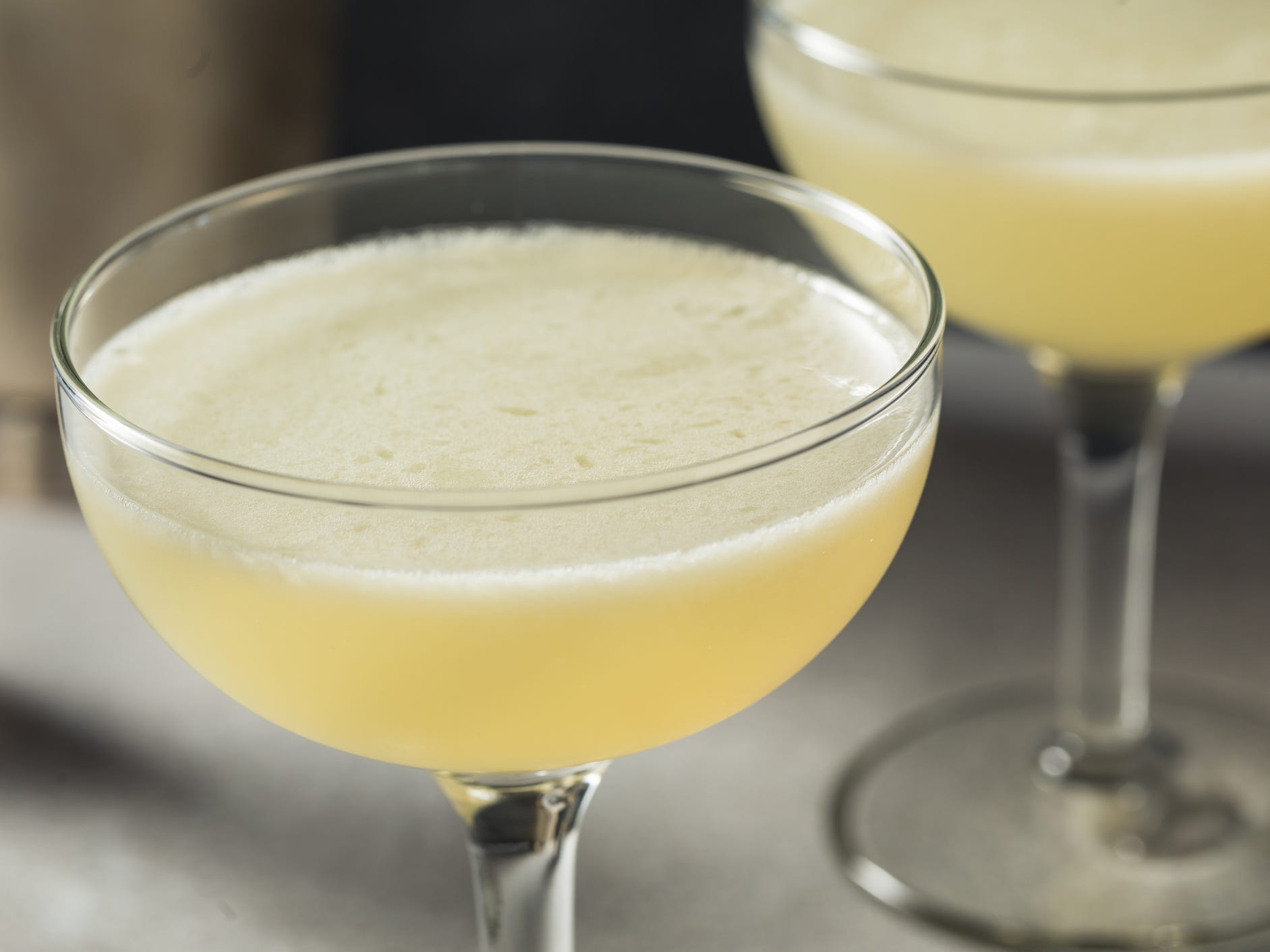
This pre-prohibition era classic is one of the best-known recipes revived from "The Savoy Cocktail Manual." "Corpse revivers" were a style of cocktail meant to be imbibed in the morning after a late-night in order to jolt the drinker awake.
To make the Corpse Reviver #2, first pour a small amount of absinthe into the chilled serving glass and swirl around to coat the interior of the glass. Mix the other ingredients into a shaker with ice and shake until chilled. Strain into the absinthe rinsed glass and enjoy.
Any orange liqueur will work, and some experts recommend using Cocchi Americano to replace the Lillet Blanc. Craddock infamously ends his recipe by saying, "Four of these taken in quick succession will quickly revive the corpse again."
10. Aviation
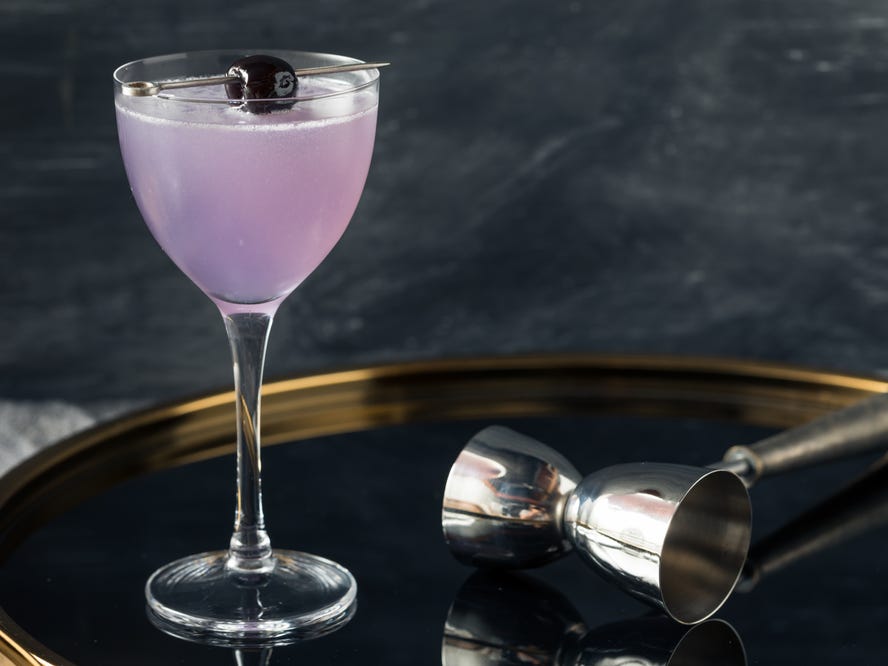
The Aviation is another recently resurrected, pre-prohibition gin cocktail. Its creation is credited to Hugo Ensslin, who published the recipe in his book "Recipes for Mixed Drinks" in 1916. It fell out of popularity after prohibition, partially because one of its main ingredients, crème de violette, became hard to find in the United States for some time. Crème de violette is a liqueur seasoned with violet flowers, and is a crucial ingredient for giving the aviation its balance and trademark purple hue.
To make an Aviation, place all ingredients in a shaker with ice and shake until chilled. Pour into a chilled glass. Garnish with a single cherry.
11. Bramble
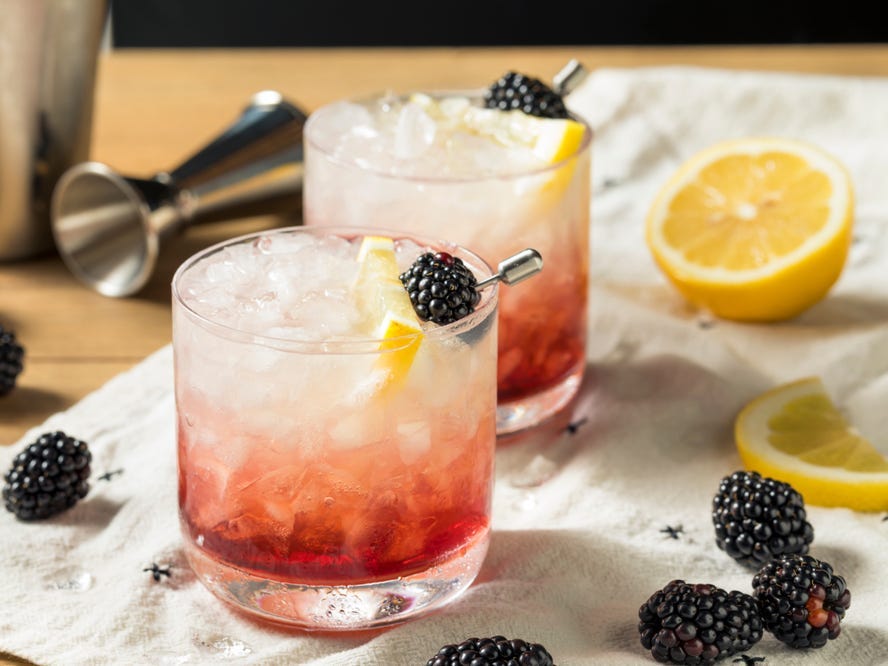
The Bramble was created in 1984 by British bartending legend Dick Bradsell, inventor of the espresso martini. It uses crème de mûre, which is a blackberry liqueur, to enhance what would otherwise be a very simple gin sour.
To make this drink, combine the gin, lemon juice, and simple syrup with ice into a shaker and shake until chilled. Strain into a glass filled with crushed or pebble ice, then add the crème de mûre. Garnish with a lemon wheel and a blackberry.
12. Gin Gin Mule
The Gin Gin Mule is another modern classic created by Audrey Saunders at her bar the Pegu Club in New York City. "Audrey was really pivotal in introducing more people to gin," says Rose. "She kind of combined a Moscow Mule with a Mojito with gin to create the Gin Gin Mule. It's a very crushable cocktail, you can sip that one real fast."
To make a Gin Gin Mule, combine the simple syrup and mint leaves into a cocktail shaker and muddle lightly. Then add the gin and lime juice with ice and shake to chill. Strain and pour into a glass over ice and top with the ginger beer. Garnish with a mint sprig.
13. Bee's Knees
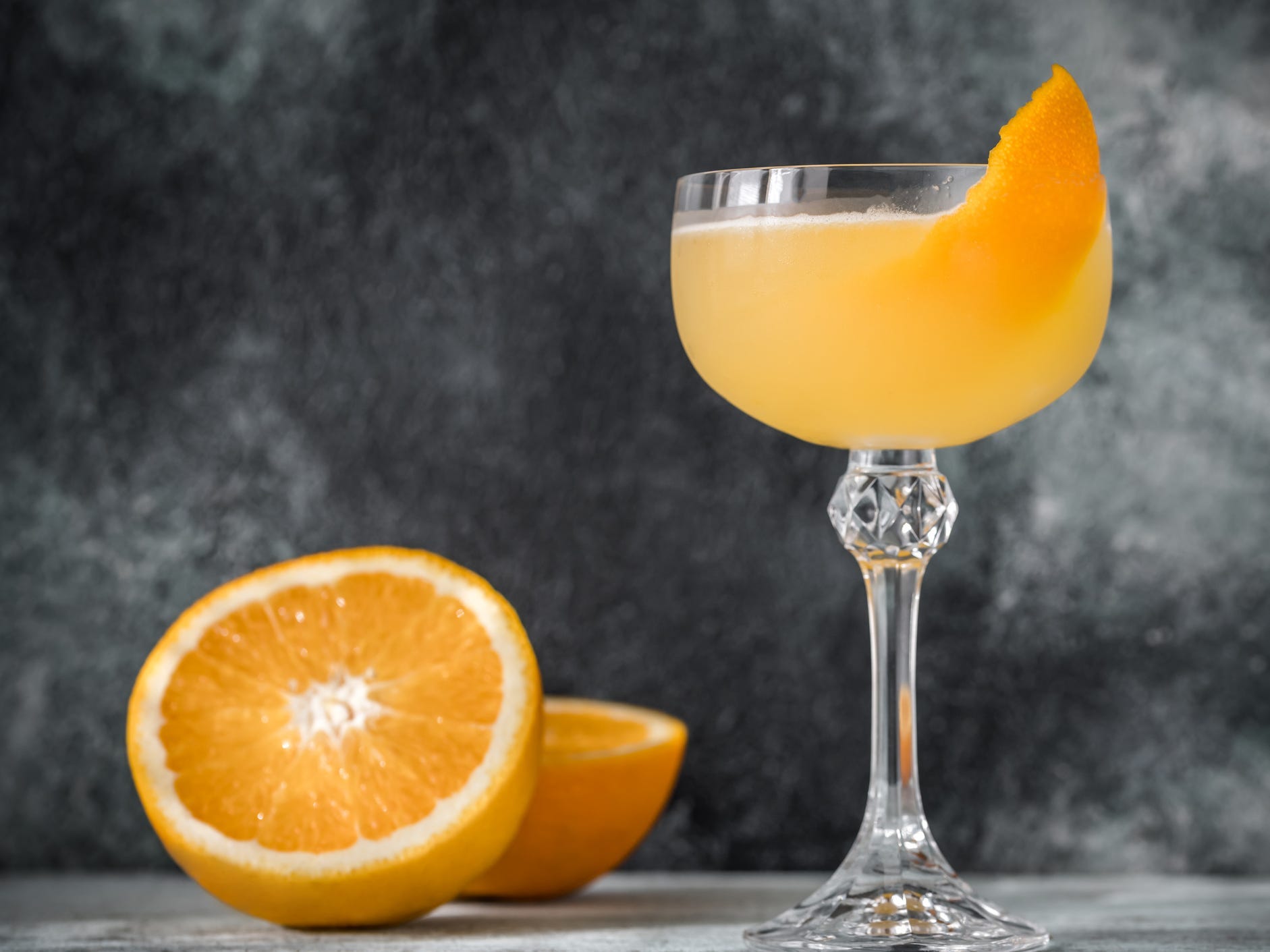
The Bee's Knees is a simple cocktail, but it's history is a bit of a question mark. It is believed to have been invented during prohibition as a way to cover up some of the unpleasant flavors in the low-quality gin that was circulating at that time. Rose recommends using the honey-forward Barr Hill gin in this cocktail.
Honey syrup is made by mixing two parts honey with one part water, then heating and stirring until both ingredients are combined. Add all ingredients into a shaker with ice and shake until completely chilled. Strain into a chilled glass then garnish with the lemon twist.
Insider's takeaway
Gin's blend of juniper and other infused botanicals allows for complex and balanced flavor pairings with anything from honey to blackberry liqueur. The drink's popularity in the cocktail world is growing as people become more interested in classic cocktails and adventurous bartenders create new gin-based drinks.
